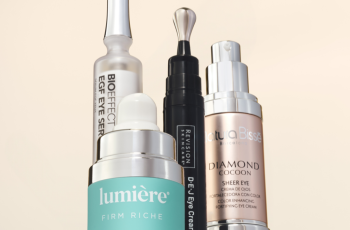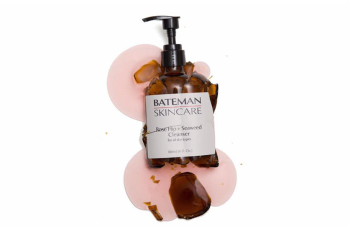
What Ingredients Help Fight Acne? A Complete Guide
Acne is a very common skin condition affecting millions worldwide. It can cause pimples, blackheads, whiteheads, cysts, and scars.
While many factors contribute to acne, including hormones, genetics, and lifestyle, the right skincare ingredients can significantly help manage and reduce it.
If you struggle with acne, you likely want to know which ingredients truly work. Acne treatments come in many forms—cleansers, gels, creams, masks, and serums.
The effectiveness depends largely on their active ingredients.
This guide will explain the best ingredients that fight acne, how they work, potential side effects, and tips on using them properly.
How Acne Develops
Before diving into ingredients, it’s helpful to understand acne’s causes. Acne forms when hair follicles clog with dead skin cells and oil (sebum).
This environment promotes bacteria growth, causing inflammation and pimples.
Hormonal fluctuations, stress, certain medications, diet, and poor skincare can worsen acne. Acne lesions can be superficial (blackheads and whiteheads) or deeper, cystic, and inflamed.
To effectively combat acne, treatments need to address multiple factors: excess oil, clogged pores, bacteria, and inflammation.
Over-the-Counter Acne Ingredients
Many effective acne ingredients are available OTC, which means you don’t need a prescription. These include salicylic acid, benzoyl peroxide, and alpha hydroxy acids.
Salicylic Acid
Salicylic acid is one of the most popular acne-fighting ingredients. It is a beta hydroxy acid (BHA) known for its ability to penetrate deep into pores.
It exfoliates inside the pore lining, dissolving dead skin cells and excess oil that can clog pores. This unclogs follicles and helps prevent blackheads and whiteheads.
Salicylic acid also has mild anti-inflammatory properties, helping to reduce redness and swelling around pimples.
You will find salicylic acid in cleansers, toners, spot treatments, serums, and moisturizers. For it to be effective, the product must contain an active amount of salicylic acid.
If the ingredient is low on the list, it may be too weak.
Benzoyl Peroxide
Benzoyl peroxide is a powerful antibacterial agent. It kills the bacteria Cutibacterium acnes (formerly Propionibacterium acnes), which contributes to acne inflammation.
In addition to killing bacteria, benzoyl peroxide reduces excess oil and helps peel away dead skin cells.
It comes in different concentrations, typically from 2.5% to 10%. Higher concentrations aren’t necessarily more effective and can cause more irritation.
Side effects often include redness, dryness, peeling, and itching, especially when first starting treatment. Begin slowly and use moisturizers to manage dryness.
Alpha Hydroxy Acids (AHAs)
AHAs like glycolic acid and lactic acid work mainly on the skin’s surface. They exfoliate dead skin cells, helping clear clogged pores and revealing fresh, new skin underneath.
Glycolic acid has the smallest molecular size of AHAs, so it penetrates deeper and can boost collagen production. It smooths fine lines, improves texture, and helps prevent acne scarring.
Lactic acid is gentler and more hydrating, making it suitable for sensitive skin types. It also reduces inflammation and soothes irritation.
Products with AHAs include cleansers, toners, serums, and masks. Regular use can help maintain clearer skin and prevent future breakouts.
Prescription Acne Ingredients
For moderate to severe acne, dermatologists may prescribe stronger treatments.
Topical Retinoids
Retinoids, derived from vitamin A, are among the most effective acne treatments. They increase cell turnover, preventing clogged pores.
They reduce inflammation, promote skin healing, and improve skin texture and tone. Common topical retinoids include tretinoin, adapalene, and tazarotene.
Retinoids can cause dryness, redness, and irritation initially but usually improve with continued use. They also increase skin sensitivity to the sun, so daily sunscreen is essential.
Topical and Oral Antibiotics
Antibiotics reduce C. acnes bacteria and inflammation. They are often combined with other treatments like benzoyl peroxide or retinoids to prevent resistance.
Common topical antibiotics include clindamycin and erythromycin. Oral antibiotics may be prescribed for more severe acne or cystic acne.
Azelaic Acid
Azelaic acid is a natural acid that kills bacteria and reduces inflammation. It also helps fade post-acne hyperpigmentation, making it beneficial for darker skin tones.
It is available in topical creams and gels and is suitable for sensitive skin.
Hormonal Treatments
For women, hormonal acne can be treated with combined oral contraceptives or anti-androgen medications like spironolactone. These treatments regulate hormone fluctuations that trigger acne.
Natural Ingredients for Acne
Many people prefer natural or plant-based ingredients. Some have scientific backing, while others are traditional remedies.
Witch Hazel
Witch hazel is a plant extract with anti-inflammatory and antibacterial properties. It can soothe inflamed skin and help reduce redness.
While witch hazel may not cure acne, it can calm irritation and support healing when used as a toner or spot treatment.
Tea Tree Oil
Tea tree oil comes from the leaves of the Melaleuca alternifolia tree. It has strong antibacterial and anti-inflammatory effects.
Studies show that products with 5% tea tree oil can reduce acne lesions effectively, often with fewer side effects than benzoyl peroxide.
Always dilute tea tree oil before applying it directly to skin to avoid irritation or allergic reactions.
Acids That Help Acne
Using acids correctly in your skincare can improve acne dramatically by exfoliating and preventing clogged pores.
Glycolic Acid
Glycolic acid exfoliates surface skin cells and encourages collagen production, improving skin firmness and clarity.
Its small size allows it to penetrate deeply. It is also useful for fading dark spots left by acne scars.
Salicylic Acid
Salicylic acid targets inside pores. It is especially good for oily or combination skin prone to blackheads and enlarged pores.
It’s best to patch test salicylic acid first, as overuse can cause irritation.
Lactic Acid
Lactic acid combines exfoliation with moisture. This makes it excellent for sensitive or dry skin types suffering from acne.
It smooths skin and reduces breakouts on tougher skin areas like the back and chest.
Lifestyle Tips to Support Clear Skin
Besides topical ingredients, lifestyle factors can influence acne severity.
Diet and Acne
Some studies suggest dairy products may worsen acne in some people. Reducing milk, cheese, and other dairy can improve skin clarity.
Eating a balanced diet rich in fruits, vegetables, and whole grains supports healthy skin.
Exercise
Regular exercise improves blood circulation, helping nourish skin cells and remove toxins.
It also reduces stress, a known acne trigger. Just be sure to cleanse your skin after sweating to avoid clogged pores.
Hydration
Drinking enough water keeps your skin hydrated, supports healing, and maintains the skin barrier.
Gentle Skincare Routine
Avoid over-washing or harsh scrubbing. Use gentle cleansers and exfoliate only 2-3 times a week to remove buildup.
Potential Risks and Precautions
Some acne ingredients can cause irritation or dryness. Introduce new products slowly and patch test when possible.
Avoid mixing certain ingredients (like retinoids and AHAs) without professional advice, as this can cause sensitivity.
Always use sunscreen daily, especially when using exfoliating acids or retinoids, as these increase sun sensitivity.
Conclusion: Building an Effective Acne Routine
The best acne treatments combine active ingredients targeting oil, bacteria, and clogged pores.
Salicylic acid, benzoyl peroxide, AHAs, and retinoids are proven to work when used consistently and correctly.
Natural ingredients like tea tree oil and witch hazel can complement treatments and soothe skin.
Lifestyle factors, including diet and exercise, also play important roles.
Consult a dermatologist for personalized advice, especially if your acne is severe or persistent.
Remember, acne treatment takes time—results usually appear after weeks or months of consistent use.

